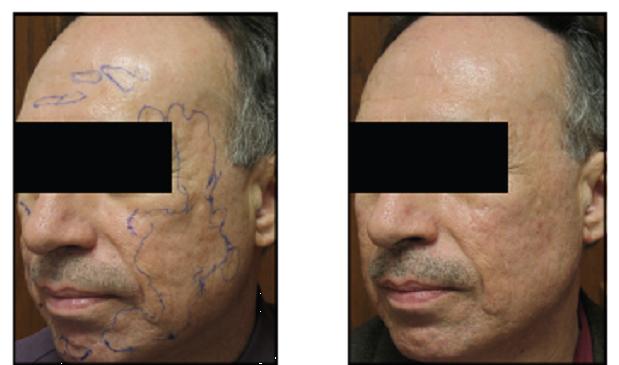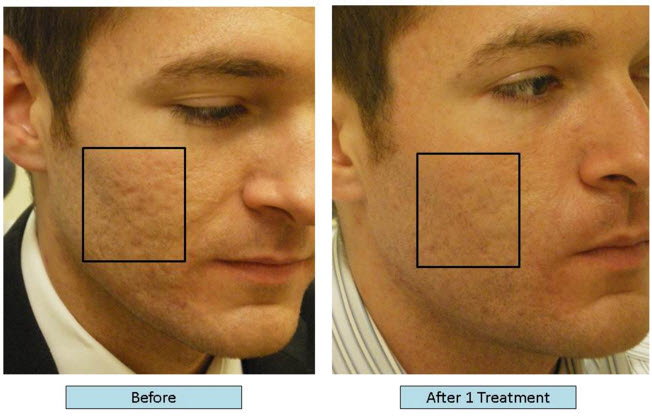Exploring Skin Problem: Treating and recognizing Acne Scars for Healthier Skin
Acne marks stand for a considerable concern for individuals looking for to maintain healthy and balanced skin, as they can influence both look and self-worth. Comprehending the different types of scars, from atrophic to hypertrophic, is necessary for establishing appropriate therapy options.
Recognizing Acne Marks
Understanding acne marks is critical for anybody that has experienced serious acne, as these marks can have an enduring influence on both physical look and psychological health. Acne scars create when the skin undergoes inflammatory feedbacks throughout energetic acne sores. The extent of scarring is commonly affected by aspects such as the kind of acne, its period, and individual skin characteristics.
The body's natural recovery procedure can result in either atrophic scars, which appear as anxieties in the skin, or hypertrophic scars, which are increased and arise from overflow of collagen. Furthermore, the emotional toll of acne marks need to not be ignored; several people report sensations of humiliation, anxiousness, and decreased self-confidence. This emotional problem can affect social interactions and total high quality of life.
Dealing with acne scars needs an extensive understanding of their development and influence. Recognition of the potential for long-lasting repercussions associated with neglected scars can motivate individuals to look for ideal therapies. Early treatment and reliable management techniques can considerably enhance skin appearance and boost psychological durability, highlighting the significance of comprehending the intricacies bordering acne marks.
Sorts Of Acne Scars
Acne scars can be categorized into distinct kinds, each showing unique attributes and needing specific therapy methods. The primary kinds of acne scars include atrophic, hypertrophic, and keloid marks.

Hypertrophic marks, on the other hand, are raised above the skin level and are the result of extreme collagen production during the recovery procedure. They generally stay within the boundaries of the original acne lesion. Keloid scars are similar yet expand past the original injury website, developing bigger, increased areas that can be excruciating or scratchy.
Recognizing these kinds of marks is vital for selecting suitable treatment choices. Various marks might respond better to certain treatments, such as laser therapies, fillers, or surgical interventions, emphasizing the relevance of a customized technique to acne mark monitoring.
Determining Your Scars
Acne scars normally drop right into 2 categories: hypertrophic and atrophic marks. These can even more be identified right into ice-pick marks, boxcar scars, and rolling marks, each displaying distinct features and needing different methods for evaluation - acne treatment for sensitive skin.
Hypertrophic scars, on the other hand, are increased and take place because of excessive collagen manufacturing throughout the healing procedure. Identifying the particular functions of your scars-- such as deepness, texture, and width-- is necessary for proper identification. Additionally, think about the circulation of scars across your skin, as this can show the extent and duration of the acne condition.
Engaging with a skin specialist can offer valuable insights right into the nature of your marks, aiding in the differentiation between numerous kinds. An extensive understanding of your marks will inevitably bring about a much more check my reference tailored and effective you can check here therapy strategy, making certain a clearer and healthier complexion.
Therapy Choices Available
Determining the certain kind of acne scars present on your skin prepares for discovering efficient treatment alternatives. Usual sorts of acne marks include atrophic (depressed), hypertrophic (increased), and post-inflammatory erythema.
For atrophic scars, options such as chemical peels, microneedling, and laser resurfacing are widely utilized. Chemical peels off utilize acids to eliminate the external layer of skin, advertising new cell development. Microneedling entails tiny needles that produce micro-injuries, stimulating collagen manufacturing. Laser resurfacing targets damaged skin cells, boosting texture and tone.
Hypertrophic marks can be treated with corticosteroid shots to squash the mark or laser therapy to decrease redness and boost look. acne scars. Silicone gel sheets and stress dressings may additionally assist in handling increased scars
On top of that, facial fillers can momentarily fill up in anxieties from atrophic scars, while medical excision may be ideal for extreme cases. Each treatment option has its advantages and factors to consider, making it essential to consult with a dermatologist. They can offer tailored referrals based upon the type and severity of your scars, along with your skin kind and site web general wellness.
Tips for Avoidance
Effective prevention strategies can significantly reduce the probability of developing acne scars. The first action is to keep a consistent skin care regimen that includes mild cleaning, peeling, and hydrating. Using non-comedogenic items aids prevent blocked pores, which can intensify acne. Additionally, incorporating topical therapies containing salicylic acid or benzoyl peroxide can successfully manage breakouts and minimize swelling.
Avoiding the impulse to pick or stand out acne sores is crucial, as this can lead to much deeper skin damage and boost the danger of scarring. Rather, consider using a cool compress or over-the-counter treatments to reduce swelling and redness.
Sun security is one more crucial aspect of avoidance; ultraviolet (UV) rays can dim marks and impede the recovery procedure. Using a broad-spectrum sunscreen with a minimum of SPF 30 daily can protect the skin and promote also healing.
Lastly, maintaining a balanced diet regimen abundant in anti-oxidants, vitamins, and minerals supports skin wellness and recovery. Remaining moisturized and managing tension degrees can likewise play a substantial duty in lowering acne flare-ups. By implementing these strategies, people can dramatically lessen their possibilities of creating acne scars.

Conclusion
To conclude, understanding and recognizing acne scars is essential for efficient therapy and achieving healthier skin. Different kinds of acne scars, consisting of hypertrophic and atrophic marks, necessitate certain treatments customized to individual demands. Treatment alternatives array from chemical peels and microneedling to corticosteroid injections, stressing the significance of seeking advice from a skin doctor. Additionally, embracing a mild skincare regimen and safeguarding the skin from UV direct exposure can substantially add to the prevention of further scarring and total skin health and wellness.
The body's all-natural healing process can result in either atrophic marks, which show up as clinical depressions in the skin, or hypertrophic scars, which are elevated and result from overflow of collagen. They are further divided into three subtypes: ice choice scars, boxcar marks, and rolling scars. Acne marks normally fall into 2 categories: hypertrophic and atrophic scars. These can better be classified right into ice-pick scars, boxcar scars, and rolling scars, each showing distinct attributes and requiring different strategies for evaluation.
Various types of acne marks, including atrophic and hypertrophic scars, necessitate particular interventions customized to private needs.